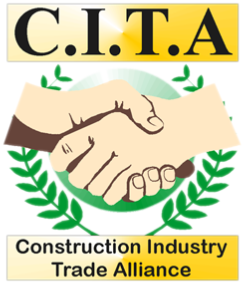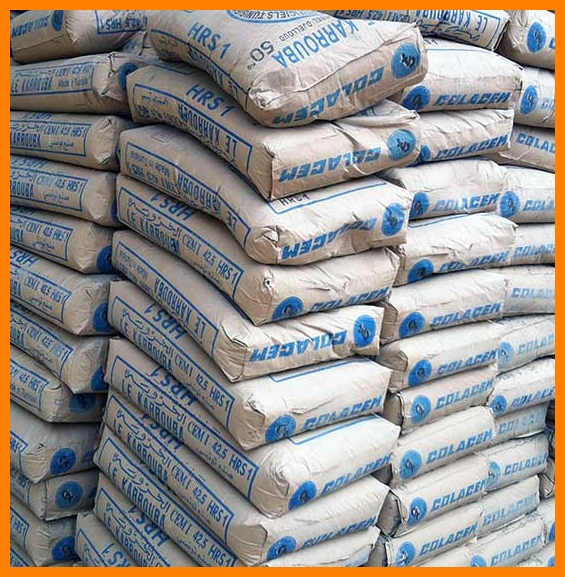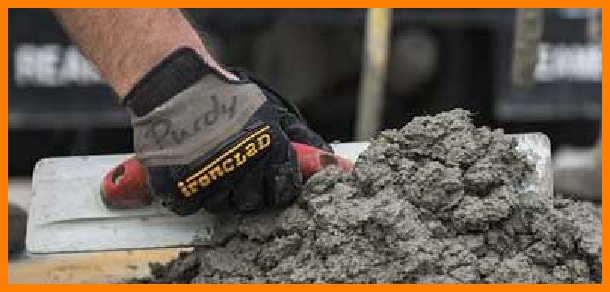

EMAIL: enquiries@cita.co.uk

Copyright © CITA Construction Industry Trade Alliance -

BUILDING TRADE ASSOCIATION







CONSTRUCTION INDUSTRY TRADE ALLIANCE

CITA is a UK Trade Association for the Construction & Building Industry
Tel: 0845 250 4390 Fax: 0845 250 4391




The Hazards of Working with Cement



Working with Cement
Cement is widely used in construction. Anyone who uses cement (or anything containing cement, such as mortar, plaster and concrete) or is responsible for managing its use should be aware that it presents a hazard to health.
Health effects: Cement can cause ill health mainly by:
- skin contact;
- inhalation of dust
- manual handling.


Contact with wet cement can cause both dermatitis and burns.
Dermatitis
Skin affected by dermatitis feels itchy and sore, and looks red, scaly and cracked. Cement is capable of causing dermatitis by two mechanisms -
Irritant dermatitis is caused by the physical properties of cement that irritate the skin mechanically. The fine particles of cement, often mixed with sand or other aggregates to make mortar or concrete, can abrade the skin and cause irritation resulting in dermatitis. With treatment, irritant dermatitis will usually clear up. But if exposure continues over a longer period the condition will get worse and the individual is then more susceptible to allergic dermatitis.
Allergic dermatitis is caused by sensitisation to the hexavalent chromium (chromate) present in cement. The way this works is quite distinct from that of irritancy. Sensitisers penetrate the barrier layer of the skin and cause an allergic reaction. Hexavalent chromium is known to be the most common cause of allergic dermatitis in men. Research has shown that between 5% and 10% of construction workers may be sensitised to cement and that plasterers, concreters and bricklayers are particularly at risk. Once someone has become sensitised to hexavalent chromium, any future exposure may trigger dermatitis. Some skilled tradesmen have been forced to change their trade because of this. The longer the duration of skin contact with a sensitiser, the more it will penetrate the skin, and the greater the risk of sensitisation will become. Therefore, if cement is left on the skin throughout the working day, rather than being washed off at intervals, the risk of contact sensitisation to hexavalent chromium will be increased.
Both irritant and allergic dermatitis can affect a person at the same time.
Cement burns
Wet cement can cause burns. The principal cause is thought to be the alkalinity of the wet cement. If wet cement becomes trapped against the skin, for example by kneeling in it or if cement falls into a boot or glove, a serious burn or ulcer can rapidly develop. These often take months to heal, and in extreme cases will need skin grafts or can even lead to amputation. Serious chemical burns to the eyes can also be caused following a splash of cement.
Inhalation of dust
High levels of dust can be produced when cement is handled, for example when emptying or disposing of bags. In the short term, exposure to high levels of cement dust irritates the nose and throat. Scabbling or concrete cutting can also produce high levels of dust which may contain silica.
Manual handling
Working with cement also poses risks such as sprains and strains, particularly to the back, arms and shoulders from lifting and carrying cement bags, mixing mortar etc. More serious damage to the back can be caused in the long term if workers are continually lifting heavy weights.
Health prevention and health surveillance
Skin contact
You should first consider using elimination or substitution to prevent the possibility of contact with cement. Otherwise, you should apply control measures which minimise contact with the skin either directly or indirectly from contaminated surfaces in the working environment.
An important way of controlling cement dermatitis is by washing the skin with warm water and soap, or other skin cleanser, and drying the skin afterwards. Sinks should be large enough to wash the forearms and have both hot and cold (or warm) running water. Soap and towels should be provided. Facilities for drying clothes and changing clothes should also be available.
Gloves may help to protect skin from cement, but they may not be suitable for all aspects of construction site work. Caution is advised when using gloves as cement trapped against the skin inside the glove can cause a cement burn. You should provide protective clothing, including overalls with long sleeves and long trousers.
Employers are required to arrange for employees to receive suitable health surveillance where there is exposure to a substance known to be associated with skin disease and where there is a reasonable likelihood that the disease may occur. This means you should provide health surveillance for workers who will be working with wet cement on a regular basis.
Health surveillance is needed to:
- protect individuals;
- identify as early as possible any indicators of skin changes related to exposure, so that steps can be taken to treat their condition and to advise them about the future; and
- give early warning of lapses in control.
Health surveillance must never be regarded as reducing the need to control exposure or to wash cement off the skin.
Simple health surveillance will usually be sufficient. Skin inspections should be done at regular intervals by a competent person, and the results recorded. Employers will probably need the help of an occupational health nurse or doctor to devise a suitable health surveillance regime and they will need to train a ‘responsible person’, for instance a supervisor, to carry out the skin inspections.
A responsible person is someone appointed by the employer who, following instruction from an occupational health physician or nurse, is competent to recognise the signs and symptoms of cement-
The employer must keep health records containing the particulars set out in the Appendix to the General COSHH Approved Code of Practice. Employers are also required to provide employees with information, instruction and training on the nature of the risk to health, and the precautions to be taken. This should include characteristic signs and symptoms of dermatitis.
Employees should be encouraged to examine their own skin for any such signs and report them. Reports should be made to the ‘responsible person’ or to the occupational health nurse.
Inhalation of dust
Exposure to dust should be eliminated where possible, for example, by purchasing ready mixed concrete. Where this is not possible, the risk should be assessed and appropriate control measures implemented.
Manual handling
Manual handling of heavy loads should be avoided. In particular, cement should be supplied in 25 kg bags or ordered in bulk supply. Where manual handling does take place, you should assess the risks and adopt appropriate risk control measures.



Legal provisions
The Control of Substances Hazardous to Health Regulations 1999 and the Management of Health and Safety at Work Regulations 1999 require the employer to assess health risks and prevent or control exposure.
The Construction (Health, Safety and Welfare) Regulations 1996 require those in control of construction sites to ensure that suitable and sufficient welfare facilities are provided. This includes providing adequate washing facilities with hot and cold (or warm) running water and facilities for changing and drying clothing.
The Personal Protective Equipment at Work Regulations 1992 require employers to provide suitable personal protective equipment for their employees, to make sure it is maintained (and replaced, where necessary) and to inform, instruct and train employees required to use it.
The Manual Handling Operations Regulations 1992 require employers to avoid manual handling where reasonably practicable and undertake risk assessment of the remaining manual handling tasks.
This article use information obtained from HSE Health and Safety Leaflet and is reproduced under the terms of the Open Government Licence.

BACK TO ADVICE